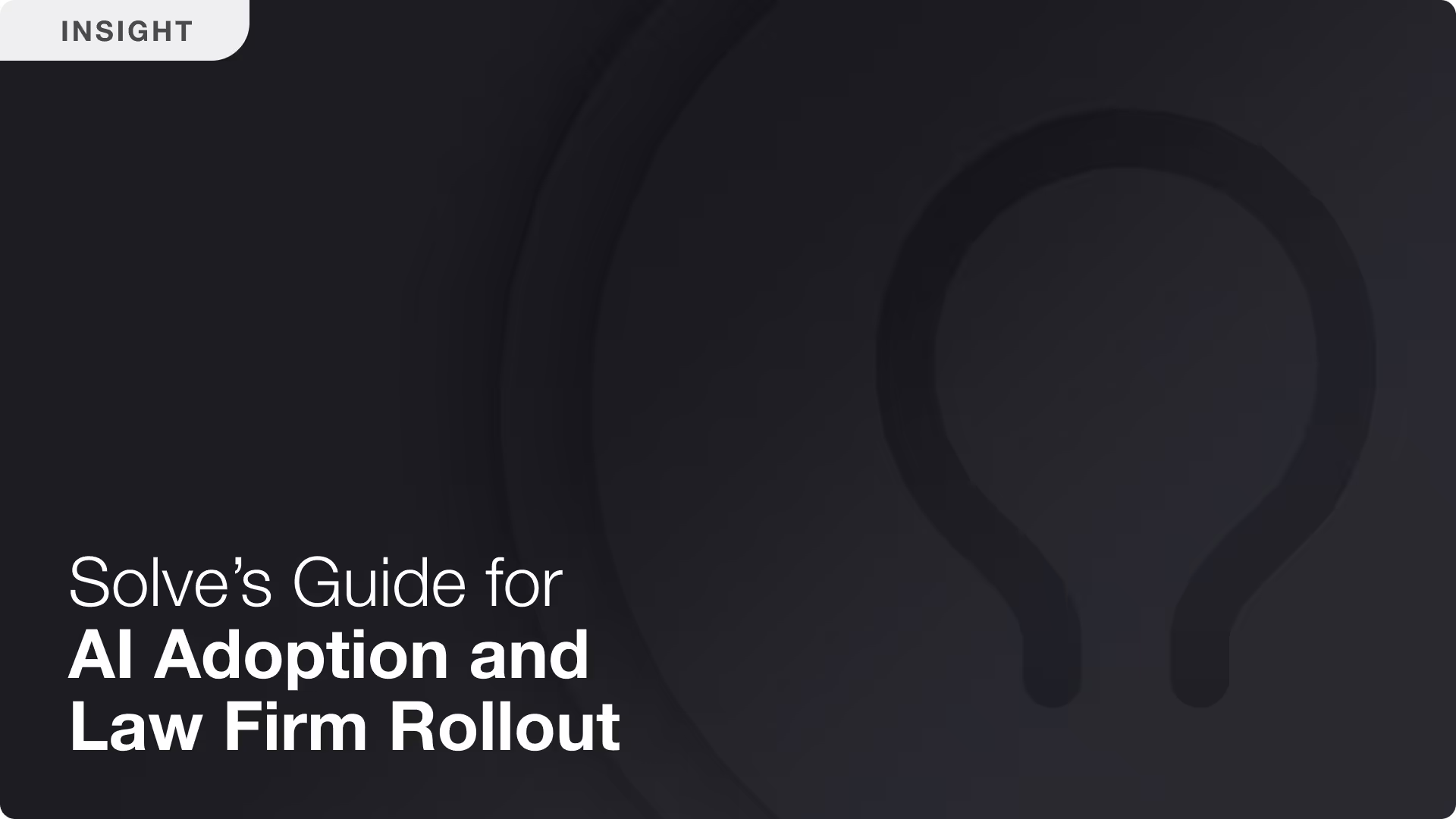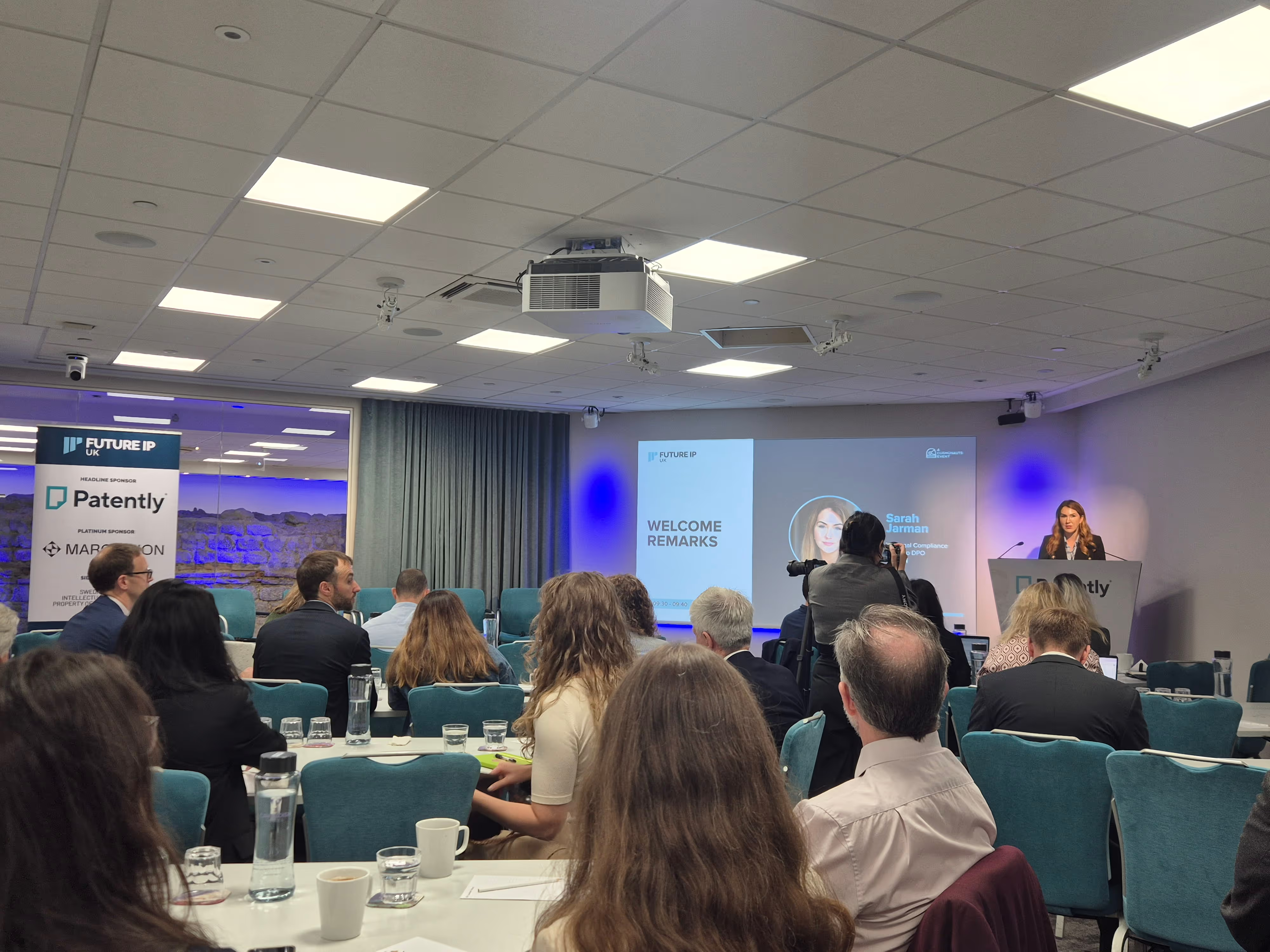David Joo EPA is a European patent attorney and has both legal and commercial IP experience. David studied Physics at King’s College London. Most recently, he helped develop Aon’s IP M&A advisory practice working closely with corporates and private equity firms. Prior to that, he worked at reputable US law firm Haley Guiliano, the patent practice spin-off from Ropes & Gray.
Related articles

Solve’s Guide for AI Adoption and Firm Rollout
After working with hundreds of IP teams globally to roll out AI patent software, we have learned that the firms who build a deliberate onboarding process for firm-wide adoption have the quickest, highest rate of success.
At Solve, we’ve seen that success and failure for proper AI adoption isn’t just about the technology. Rather, it’s the process, the support, and the people behind it.
All

Our First Customer Advisory Board Meeting
In September 2025, we brought together our Customer Advisory Board (CAB) for an in-person meeting at the Hotel Del Coronado in San Diego, just ahead of the IPO Annual Meeting.
Our CAB represents some of the most influential voices in IP. Collectively, the group manages over 160,000 active patents while prosecuting more than 20,000 applications annually. Our CAB members span the full spectrum of practice areas, from software and electrical to mechanical, life sciences, and pharmaceuticals. The composition is 80% private practice and 20% in-house IP teams, giving us a well-rounded perspective on the challenges and opportunities facing the profession when it comes to AI integration.
All

Empowering IP with AI: A Future IP UK Perspective
Artificial intelligence is no longer future-thinking for IP professionals. AI patent software is reshaping how teams draft, search, and manage patent portfolios today.
At this year's Future IP UK conference, IP leaders from industry, law, and government shared what it actually takes to bring AI into established workflows. The conversation revealed that the approach in the UK, generally, has been measured and focused on long-term value over quick wins.
At Solve Intelligence, we've been at the coalface of this transformation globally, working directly with private practice firms and in-house IP teams across multiple jurisdictions. The themes emerging from Future IP UK echo insights we've been exploring for the past two years.
All
.avif)
How Should Patent Practitioners Evaluate AI Tools for Data Security and Confidentiality?
This article dives into how Solve Intelligence has been prioritising security since inception with best-in-class data protection.
All
.avif)
The ROI of AI Patent Drafting: Building the Business Case
AI adoption in patent law firms rarely stalls because partners doubt the technology. The real barrier is commercial justification.
When evaluating any significant investment, partners ask the same fundamental questions:
- Does this software actually save us money?
- Will it create capacity we can monetize?
- Can it generate new revenue streams?
Solve Intelligence’s Patent Copilot™ was built with these questions top of mind. This article provides a high-level overview of the business case and ROI breakdown of AI patent drafting and partnering with Solve Intelligence.
All
.avif)
Building AI Tools That Patent Attorneys Trust
After countless conversations with patent attorneys across 5 continents, it’s clear that patent practitioners want AI tools that work like a trusted colleague who is always available, incredibly thorough, and has a genuine understanding of patent law.
At Solve Intelligence, we know what patent attorneys are dealing with because we've been there. Our team includes patent attorneys from firms like Dentons, Haley Guiliano, Quarles & Brady, and Reddie & Grose. We left private practice not to replace patent attorneys, but to build solutions to the problems we personally faced.
In this post, we share the experiences of Solve Intelligence customers who explain how our AI patent platform helps them work faster, with greater accuracy, and create more time for strategic client work. Their stories highlight the real world benefits patent attorneys are seeing in practice.
AI for Patent Drafting
All
.avif)